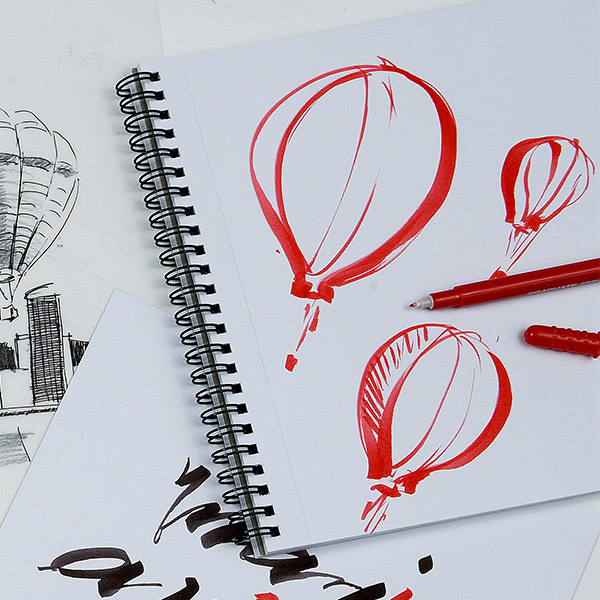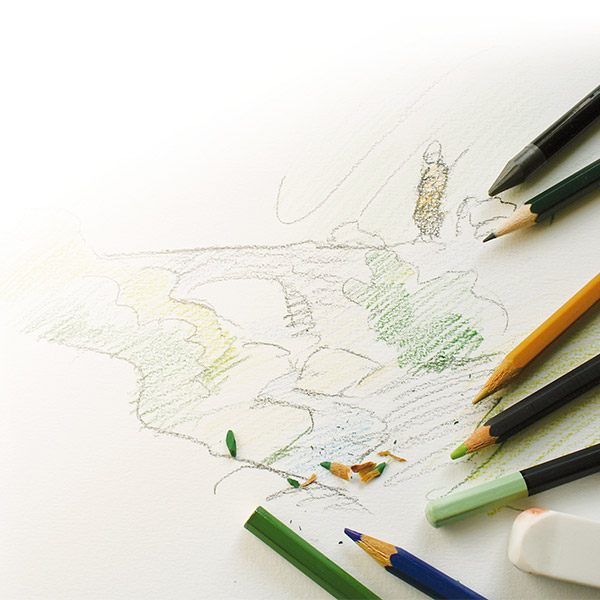When sketching from life, there's no point in loading yourself down with rags, erasers and fixatives: You need to take along the min-i-mum!
- Home
- Expert advice
- Drawing: Selecting your material

1. Select a solid, portable support
For obvious reasons of organization, it is preferable to avoid working on loose leaf paper (because it can get lost or damaged). Your most practical tool is a sketch pad.
How do you select it?
Select a pad with a hard back. This provides you with support.
- Spiral pads are practical because the sheets are independent of each other.
- As for format, go for simplicity. A4 or A5 sizes provide you with a very comfortable drawing surface and are not very cumbersome. As for volume, go light... a hundred sheets are quite enough.
- Sketch paper is usually bulked, that is, both light and thick. It is perfectly suited to graphite, pastel, charcoal and sanguine drawing.
However, if you work with a felt-tip or marker, select a pad of smooth, water and ink resistant, paper (layout paper).
How do you use it?
- When you work on a subject from various angles, do all your rough sketches on the same page. This way, you can keep an overview.
- Try turning your pad to be more comfortable. Draw in all directions.
- Only draw on the front of the paper. Transparency could play tricks on you...
Memo: paper with bulk!
Connoisseurs tell us that sketch pads usually come with bulked paper. What are its qualities? It is both light and thick. It is a fairly rough paper, ideal for quick sketches and studies.

2. Selecting the right medium
Any pencil or ballpoint will do. But some media have significant advantages:
- Graphite pencils, preferably very soft ones (7B or 8B), make it possible to add both light lines and dark contours.
- Graphite lead or charcoal: alternate between a lead tip for contours, and a lead edge, for areas to be shaded. Another advantage with charcoal: you can make corrections fast. All you have to do is run your finger over the line to fade it.
- A few color pencils or markers can be very useful for quick color references.
Recommended product:
One Art Book™
Explore more tutorials on this technique
Drawing
The basics of good inking
Drawing
Drawing a Christmas Pin-Up
Drawing
Composing Landscapes
Drawing
The travel album
Drawing
Composing a still life
Drawing
Paint and Draw Outdoors
Drawing
Drawing: Secrets of perspective
Drawing
Color Basics
Drawing
Eraser drawing
Drawing
Hatch drawing
Drawing
Drawing: Human proportions
Drawing
Drawing: Stumping
Drawing
Drawing a face
Drawing
Drawing a line
Drawing
Drawing: Determining proportions
Drawing
Architectural drawing
Drawing
Preparing your Drawing material
Drawing
Choosing your drawing media
Drawing
Drawing: Create a sketchbook
Drawing
Select your drawing paper
Drawing
Drawing: shading and light
Drawing
The 6 essential steps in drawing
